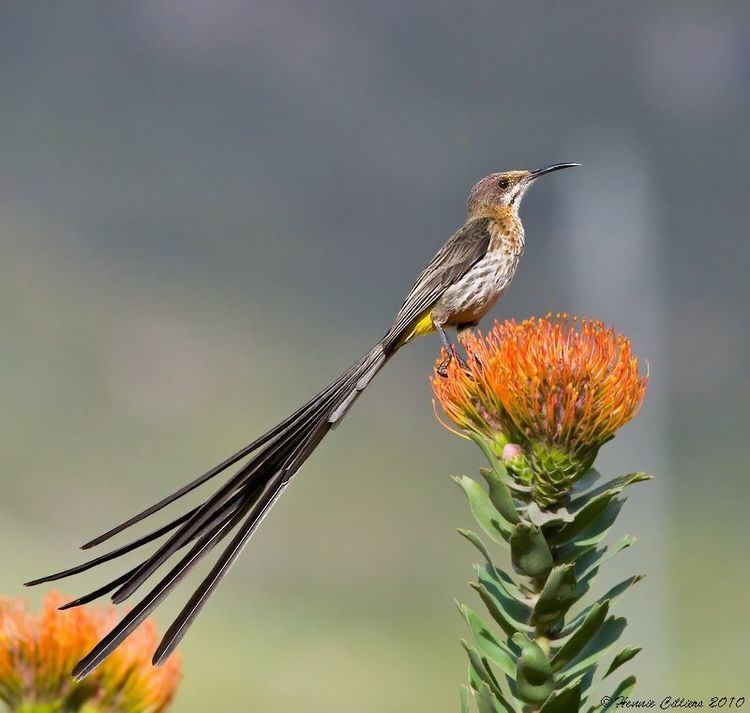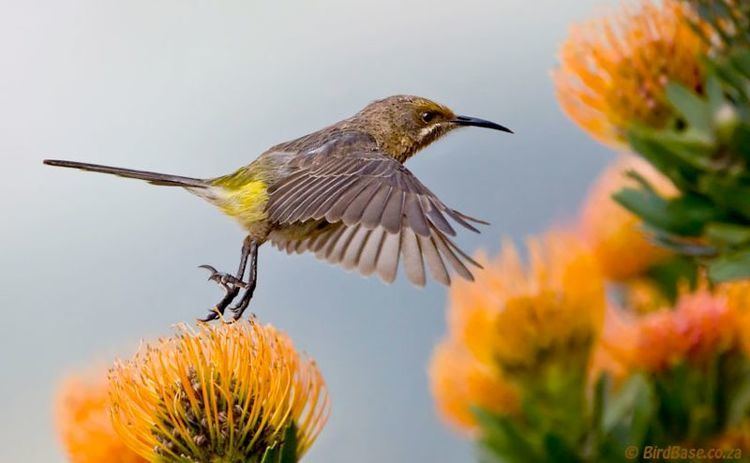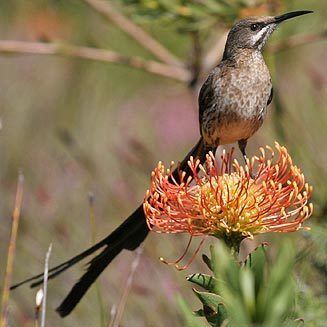Genus Promerops Phylum Chordata Rank Species | Family Promeropidae Scientific name Promerops cafer Higher classification Sugarbird Order Passerine | |
 | ||
Similar Sugarbird, Orange‑breasted sunbird, Southern double‑collared sunbird, Cape siskin, Cape bulbul | ||
Cape sugarbird kirstenbosch south africa 22nd november 2012
The Cape sugarbird (Promerops cafer) is one of the six bird species endemic to the Fynbos biome of the Western Cape and Eastern Cape provinces of South Africa.
Contents
- Cape sugarbird kirstenbosch south africa 22nd november 2012
- Cape sugarbird
- Description
- Distribution and status
- Food and feeding
- Breeding
- References

Cape sugarbird
Description

The Cape sugarbird is a grey-brown bird that easily recognisable by a spot of yellow under its tail and the very long tail feathers present in males. The male is 34–44 cm long, and the shorter-tailed, shorter-billed, and paler breasted female 25–29 cm long. Another characteristic of the Cape sugarbird is the sound it makes when it flies. The main flight feathers are arranged in such a way that when the bird beats its wings, a frrt-frrt sound is made with the intention of attracting females.
Distribution and status

The Cape sugarbird is distributed throughout the chaparral in South Africa and the Cape Floral Region where there are flowering proteas and ericas. It is also found in gardens in summer when most proteas are not in flower. A common species throughout its range, the Cape sugarbird is evaluated as Least Concern on the IUCN Red List of Threatened Species.
Food and feeding

The Cape sugarbird is a specialist nectar feeder when it comes to feeding off Proteaceae. Its long, sharp beak is used to reach the nectar of a variety of species of protea with its long brush-tipped tongue. The staple diet of this sugarbird is nectar; however, it will also eat spiders and insects. The characteristic strong winds in the Cape may make feeding off protea heads difficult, but the Cape sugarbird has adapted to this with the development of sharp claws.
Breeding
The breeding season for the Cape sugarbird is winter when there are ample food supplies.

